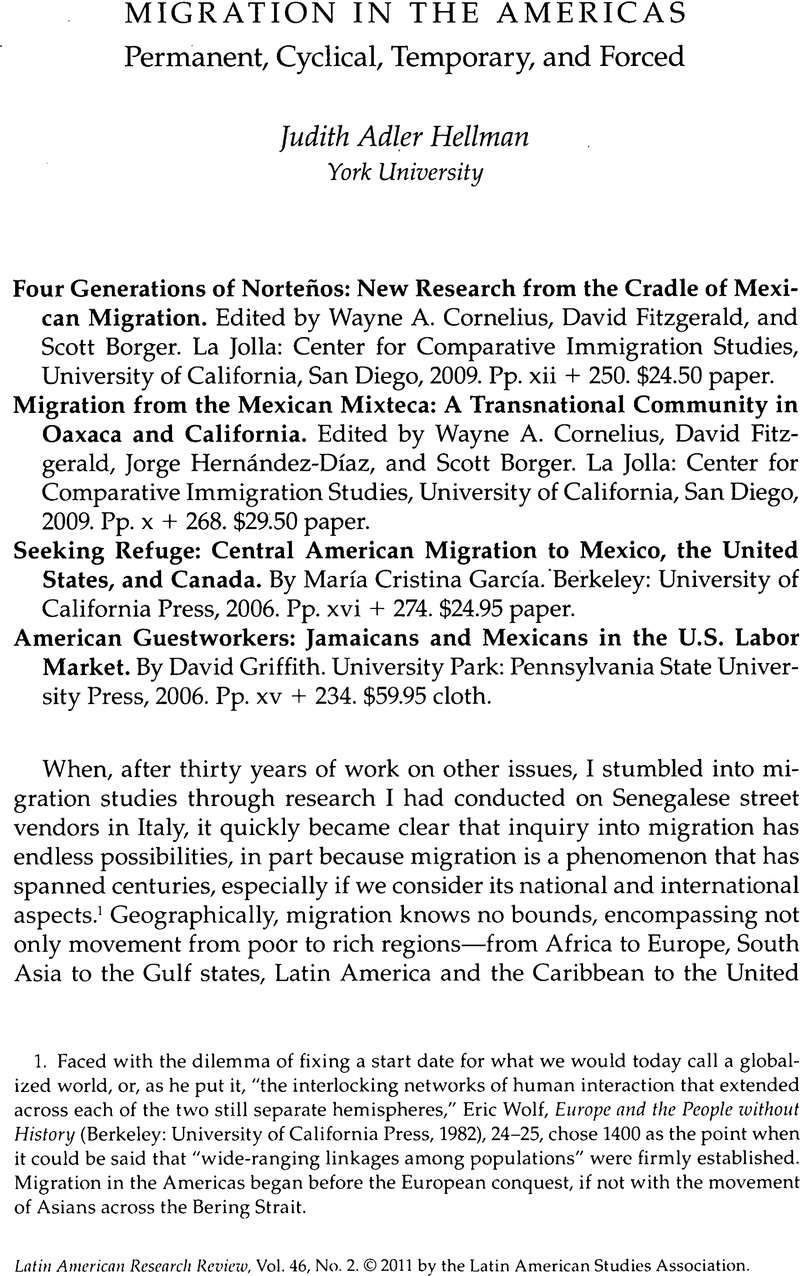No CrossRef data available.
Published online by Cambridge University Press: 05 September 2022

1. Faced with the dilemma of fixing a start date for what we would today call a globalized world, or, as he put it, “the interlocking networks of human interaction that extended across each of the two still separate hemispheres,” Eric Wolf, Europe and the People without History (Berkeley: University of California Press, 1982), 24–25, chose 1400 as the point when it could be said that “wide-ranging linkages among populations” were firmly established. Migration in the Americas began before the European conquest, if not with the movement of Asians across the Bering Strait.
2. J. Jarvis, A. Ponce, S. Rodriguez, and L. Cajigal García, “The Dynamics of Migration: Who Migrates? Who Stays? Who Settles Abroad?” in Four Generations of Norteños: New Research from the Cradle of Mexican Migration, ed. Wayne A. Cornelius, David Fitzgerald, and Scott Borger (La Jolla: Center for Comparative Immigration Studies, University of California, San Diego, 2009), 24.
3. Héctor Cordero-Guzmán, Robert C. Smith, and Ramón Grosfoguel, “Introduction: Migration, Transnationalization and Ethnic and Racial Dynamics in a Changing New York,” and Georges E. Fouron and Nina Glick Schiller, “The Generation of Identity: Redefining the Second Generation within a Transnational Social Field,” both in Migration, Transnationalization, and Race in a Changing New York (Philadelphia: Temple University Press, 1999), 1-34 and 58–86.
4. Judith Ad1er Hellman, The World of Mexican Migrants: The Rock and the Hard Place (New York: New Press, 2008), 211–231.
5. For the Yucatecan case study in this series, see Xóchitl Bada, “The Attractions and Realities of the United States,” review of Mayan Journeys: The New Migration from Yucatán to the United States, ed. Wayne A. Cornelius, David Fitzgerald, and Pedro Lewin Fischer, Latin American Research Review 45, no. 2 (2010): 236–244.
6. In my own interviews in Zacatecas and Veracruz, respondents referred to the “contagion” of migration, which led many who in the past would have put aside money or even sold off land to see their children through high school to dedicate those resources instead to sponsoring migration. Hellman, World of Mexican Migrants, 25–26.
7. See Lynn Stephen, “Expanding the Borderlands: Recent Studies on the U.S.-Mexico Border,” review of Impacts of Border Enforcement on Mexican Migration: The View from the Sending Communities, ed. Wayne A. Cornelius and Jessa M. Lewis, Latin American Research Review 44, no. 1 (2009): 266–277.
8. Hellman, World of Mexican Migrants, 219–226.